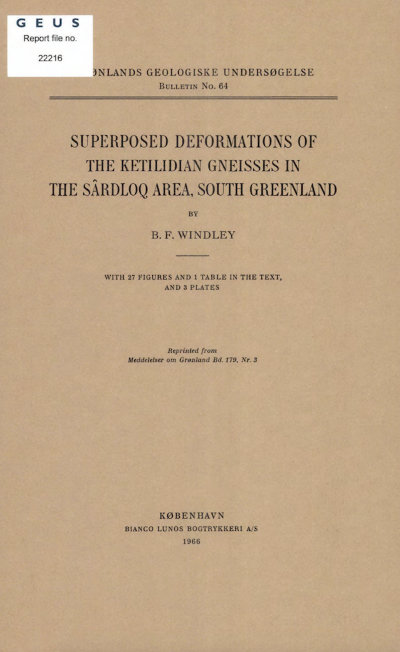Superposed deformations of the Ketilidian gneisses in the Sârdloq area, South Greenland
DOI:
https://doi.org/10.34194/bullggu.v64.6598Abstract
A large part of the Sårdloq area comprises intercalated horizons of homogeneous gneiss, veined gneiss and banded gneiss of Precambrian age. The gneisses were deformed during the Ketilidian orogeny by three phases of folding, F1-F3. F1 are in the form of mesoscopic intrafolial folds in varying states of preservation within the regional foliation, S1. F2 are mesoscopic and macroscopic folds that have a shallow plunge to the NE and SW, where unaffected by the third folding. Asymmetrical, similar, disharmonic folds with curviplanar axial planes but constantly oriented axes are the characteristic F. structures formed under strong lithological control mostly in the veined gneiss horizons under syn-migmatisation and amphibolite facies conditions. The crystallisation of constituent minerals taking place under syn- to post-kinematic conditions outlasted the deformation. S. axial plane structures are rarely developed. F3 folds have a constant orientation with vertical axial planes and plunge variably to the NW or SE. The F3 folds are in the form of a macroscopic buckling of the S1 foliation formed under post-migmatisation and epidote-amphibolite facies conditions. A tectonic mélange was locally formed in response to the third phase movements. A structural correlation is made with neighbouring areas. It is suggested that the metamorphism and migmatisation are diachronous with respect to the fold phases, arriving during the third folding at a higher level in the Nanortalik area to the SE.
Downloads
Published
Issue
Section
License
This article is distributed under a CC-BY 4.0 licence, permitting free redistribution and reproduction for any purpose, even commercial, provided proper citation of the original work. Author(s) retain copyright over the article contents.


